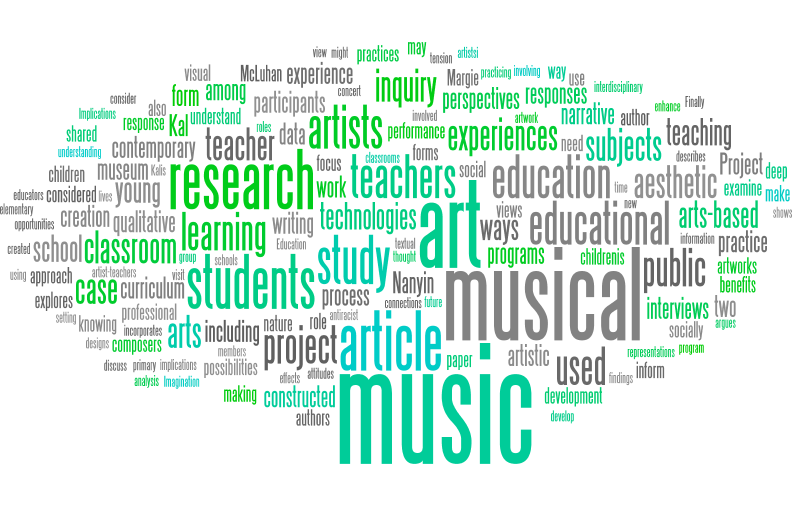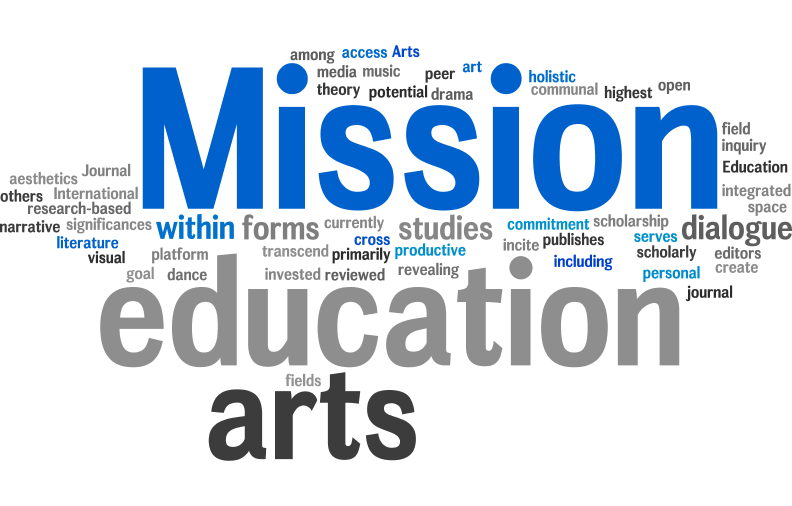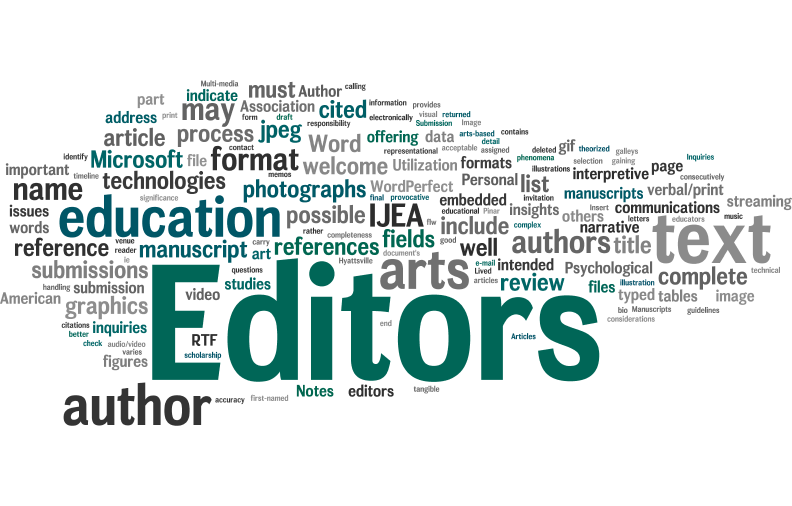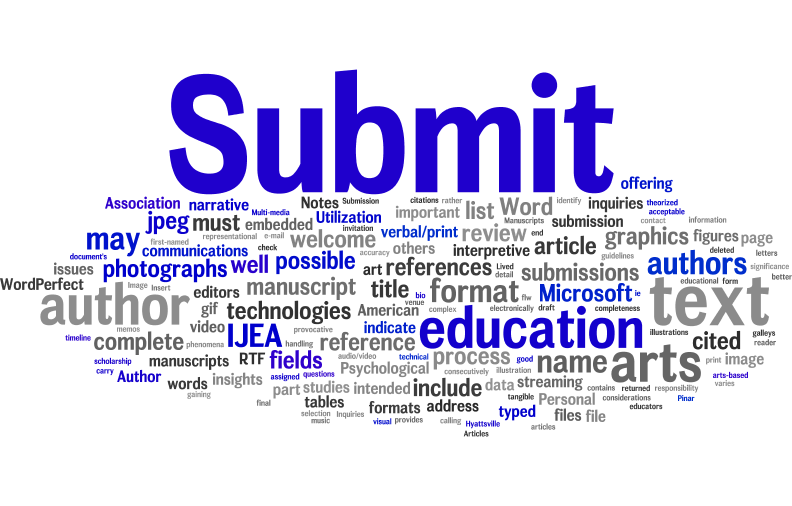2005 Volume 6
Articles and Abstracts

Articles
Volume 6 Number 1: Samuel Leong: Integrating Ancient Nanyin Music within an Interdisciplinary and National Education School-wide Curriculum: An Australian-Singaporean Collaborative Arts Education Project
This article describes a school-wide arts education project that incorporates an interdisciplinary approach involving an Australian university, the Singapore Ministry of Education, the Singapore National Arts Council, a community music association, and a local primary school. The Project engages young school children with Nanyin music, an ancient musical art form from China, and works with practicing Nanyin musicians and their musical practices. The Project integrates music into the regular music curriculum for an entire ten-week term, and incorporates a National Education focus with an interdisciplinary approach, encouraging students to make connections with subjects such as language, mathematics and social studies. The Project culminates with a public performance of Nanyin music by the participating students and an exhibition of their project work. This article will also present the viability and usefulness of the Project from the perspectives of Nanyin musicians and school participants.
Volume 6 Number 2: Jonathan Savage: Information Communication Technologies as a Tool for Re-imagining Music Education in the 21st Century
This article investigates a potential way ahead for music education in the 21st century. Drawing on material from the case study of a Manchester-based composer in northern England, it argues that those within formal education should examine more carefully the musical values and practices of artists and composers working with itechnologically-enrichedi contexts. It describes the need for the reconsideration of the role of technology in music education along with expanding the aims of music curricula and the possibilities for cross-disciplinary practice. Finally, the author urges all music educators to consider the wider artistic opportunities that new information communication technologies (ICT) can offer pupils.
Volume 6 Number 3: Patricia E. Calderwood: Risking Aesthetic Reading
This reflective article explores a tension between private and public expression of deep aesthetic response to reading, with specific reference to the play of this tension in the public space of the classroom. Implications for teaching are included, most specifically the need to understand the sensitivities and emotional vulnerability of students, the teacheris challenge of modeling open and deep responses to texts, and the creation of a supportive environment in which it is safe to take the risks needed for including deep aesthetic response in the classroom.
Volume 6 Number 4: Peter Gouzouasis & Anne-Marie LaMonde: The Use of Tetrads in the Analysis of Arts-Based Media
In this article, we chose the musical form of a sonata to examine tetrads, a simple four-fold structure that Marshall McLuhan coined and employed to describe various technologies. Tetrads, as cognitive models, are used to refine, focus, or discover entities in cultures and technologies, which are hidden from view in the psyche. Tetradic logic frames human artifacts and the means of doing things. The ideas that McLuhan eloquently brought to consciousness, long before technologies became the sophisticated communication tools they have become today, may be reinterpreted in a far more timely fashion. The poignancy of his views invite our immediate attention in light of the limitless extensions humans are being afforded with new technologies. McLuhan has always remained a significant and powerful voice among artistsohis ideas, in effect, resonate with our artistic sensibilities.
Volume 6 Number 5: Carol A. Mullen, Margie Buttignol & C. T. Patrick Diamond: Flyboy: Using the arts and theater to assist suicidal adolescents.
This article integrates story and the form of qualitative methodology known as arts-based inquiry. The authors use this approach to provide a case study of Kal, a 15-year-old boy who had unsuccessfully attempted to end his life by iflyingi off his apartment balcony. The paper begins with orientation to the background of this case and to arts-based inquiry and case history and then proceeds with an imaginative re-creation of the involvement of Margie, Kalis caregiver, in this case in the form of a letter written in role by her as Kal to his mother. Finally, the authors discuss how arts-based representations can be used to positively affect mental health and to generate creative healing energy. In this presentation Kal is the leading character, and Margie, Kalis real-life teacher in a hospital-based mental health unit in Ontario, Canada, is the supporting actress. Through dramatic fictionalization of her work with Kal, Margie found that ihuman learning can be renewed when teacher researchers use arts-based textual strategies to reflect on experience and invite others to respond to these inquiriesi (Diamond & Mullen, 1999, p. 18).
Volume 6 Number 6: Burke, J. M.; Cuilla, K. A.; Winfield, A. G.; Eaton, L. E.; & Wilson, A. V. Epiphamania.
This article is a narrative exposition of collaborative research performed at Bergamo in October 2001. As a performance of research, we hoped to extend the involvement of audience/participants and to problematize both method and articulation of lives lived (Knowles & Cole, 2001) by using art forms in (re)searching the nature and possibilities of socially constructed and experienced boundaries. The primary foci of our work are (1) the relationship of research and/to/with art, (2) the nature and effects of socially constructed boundaries in research/life/curriculum, and (3) the nature of collaboration. We used the media of dance, poetry and readersi theater to both theorize and present data about socially defined roles and identities and our responses them.
Volume 6 Number 7: Gosse, D. My arts-informed narrative inquiry into homophobia in elementary schools as a supply teacher.
Using fiction writing techniques, such as the creation of composite characters and scenarios gathered from data collection and the authoris tacit knowledge, this narrative teacher inquiry illustrates how anti-homophobia education might unfold in an elementary school. The art of yarning or storytelling is explored as an effective tool to confront homophobia with elementary school students and teachers. The author manipulates tone and style to create a bridge between the academy and the public, especially reaching out to teacher candidates and practicing teachers to share his insights and imagined possibilities. This research draws from poststructural sensibilities, challenging binary systems of gay-straight and male-female, exploring how accepted heterosexist and misandrous knowledge and social beliefs are constructed and upheld, and ultimately soliciting questionings so that status quo assumptions may be ruptured. In this supply teacheris fictional narrative, the imagination is celebrated as a provocative mode of artful educational inquiry.
Volume 6 Number 8: Upitis, R. Experiences of artists and artist-teachers involved in teacher professional development programs.
This research explores the experiences of artists and artist-teachers involved in two professional development programs for arts education: a national Canadian program and a state-wide American program. Both programs aim to help classroom teachers develop ways of teaching in and through the arts by interacting with partnering artists and/or arts organizations. Based on survey data and interviews with artists, artistteachers, teachers, and administrators, the paper outlines the experiences of artists and artist-teachers who had been involved in the programs for at least two years. The main themes developed through this research were: (1) how artistsi views of their art forms were altered, (2) what the artists viewed as challenges of contemporary public education, (3) how artistsi views of the teaching profession were altered, and (4) how artists articulated the benefits of the arts in young peopleis lives. The paper closes with a discussion of issues to consider when designing professional development programs involving artists and teachers.
Volume 6 Number 9: Cosenza, G. Implications for music educators of an interdisciplinary curriculum.
This article makes the case that authentic music learning need not be sacrificed nor compromised in any way when the music teacher designs and teaches curricula and units of study that integrate music learning with learning in other academic subjects, including other fine and performing arts subjects. The author argues that music teachers may think they are losing instructional time in the service of other subjects when, in fact, if music teachers understand the cognitive connections and shared information among subjects, they have opportunities to enhance music learning in substantive and authentic ways. Some sample curricular designs are outlined in the article as examples of how learning among subjects can serve multiple subject areas, including music.
Volume 6 Number 10: McMillan, C.: "Musical ways of knowing: A personal approach to qualitative inquiry in education."
In this comparative essay, I examine how musical ways of knowing inform my educational research. To understand this question, I employ dual perspectives as a musician and qualitative researcher. I use Eisneris concept of the art of educational evaluation (1985a, 1985b, 1997)oparticularly as educational evaluation relates to connoisseurship and criticismoto explore how my aesthetic understanding of musical performance, with its descriptive, thematic, interpretive and evaluative aspects, illuminates the process of qualitative inquiry. I also evaluate an earlier quantitative study of sight-singing achievement among young students by viewing it through a more aesthetic, affective lens. In sharing how I have learned to trust musical ways of knowing to inform my educational research, I suggest ways that other music educators can focus their aesthetic lenses on research questions of interest to us all.
Volume 6 Number 11: Pitts, S.: Twenty-nine world premiers in two hours: The story of Powerplus.
This article considers the effectiveness and implications of the Powerplus composing project, in which teenage students were asked to write for a chamber ensemble in preparation for a public concert of their work. The perspectives of all participants are considered, with a view to understanding i) the developing identities of young composers, ii) the effects of combining the musical expertise of players, teachers and students in the project, and iii) the expectations and attitudes of audience members attending the final concert. Empirical data from questionnaires, interviews and observations are used to analyse the attitudes and experiences of participants, revealing a high level of support for the project and for the value of composing in music education. The implications of the project for future research and practice are considered, and suggestions are made for strengthening the professional networks which could better contribute to young peoplesi development as composers.
Volume 6 Number 12: Andrzejczak, N., Trainin, G., & Poldberg, M. From image to text: Using images in the writing process.
This study looks at the benefits of integrating visual art creation and the writing process. The qualitative inquiry uses student, parent, and teacher interviews coupled with field observation, and artifact analysis. Emergent coding based on grounded theory clearly shows that visual art creation enhances the writing process. Students used more time for thought elaboration, generated strong descriptions, and developed concrete vocabulary. The advantages of using production of art and artwork in the pre-writing process provided a motivational entry point, a way to develop and elaborate on a scene or a narrative. This study shows that the benefits of a rich visual art experience can enhance thought and writing in response to the finished artwork.
Volume 6 Number 13: Savva, A. & Trimis, E.: Responses of young children to contemporary art exhibits: The role of artistic experiences.
This study explores pre-primary childrenis responses to contemporary art exhibits in a museum setting, the role of previous artistic experiences, and the impact of the art museum visit on childrenis responses to artworks and making art during classroom practice. The sample included 32 children (16 boys and 16 girls) randomly selected from two classrooms in two nursery public schools in Nicosia, Cyprus. In addition to open-ended interviews, classroom observation notes, and videotape analysis procedures, the artworks of children were used to find out the influences of the visit to the art museum. The findings suggest that childrenis contact with a range of art forms including contemporary art exhibits in a museum setting is an important part of their educational experiences if appropriate approaches and methods are used.
Volume 6 Number 14: Veblen, K., Beynon, C. & Odom, S. Drawing on diversity in the arts education classroom: Educating our new teachers.
In this article, the authors discuss their attempts to make antiracist multiculturalism a reality in their studentsi future classrooms. They note that the literature is replete with examples of what not to do in trivializing curriculum, and they attempt here to take theory into praxis/practice by exposing and describing their strategies for engaging their students in antiracist multicultural understandings and activities.
Volume 6 Number 15: Custodero, L. Making sense of "Making Special": Art and Intimacy in musical lives and educational practice.
An Essay Review of Dissanayake, E. (2000). Art and intimacy: How the arts began. Seattle, WA: University of Washington Press.
Volume 6 Number 16: Davis, S. G. "That thing you do!" Compositional processes of a rock band.
Understanding how students make music in non-school settings can inform teaching practice in schools, making teaching more relevant to studentsi musical perspectives. This research study examined the musical processes of a three-member rock band, their roles within the group, and considered how they constructed musical meaning. The most salient findings that emerged from this study lie at the intersection of musical growth, musical enculturation, and musical meaning. Collaborative composing was facilitated by shared musical tastes and grounded in friendship and commitment to music making. Engagement and investment in the music prompted meaningful musical experiences for group members. Ownership, agency, relevance, and personal expression fuse at the core of the value they place on this musical and social experience. Implications for the instrumental music classroom are also shared.
Volume 6 Number 17: Paley, N., Crawford, J., Kinney, K., Koons, D., & Seo, J. Remaking The Educational Imagination.
We document a set of artistic reconstructions of Elliot Eisner's The Educational Imagination which took place during a graduate seminar in contemporary curriculum discourses. In this project, students and their instructor collaboratively explored The Educational Imagination as a site for an arts-based examination of knowing, identity, and textual authority. Participants created sculptural representations of the text. The sculptures functioned alternately as artworks and experimental places of learning, thus suggesting alternative practices by which the educational experience might be reimagined. In producing these textual/artistic reconstructions, participants created an intersubjective/interpersonal dialogue as they analyzed the educational, aesthetic, and ideological factors which shaped their thinking about curriculum as remade from Eisner's text.



